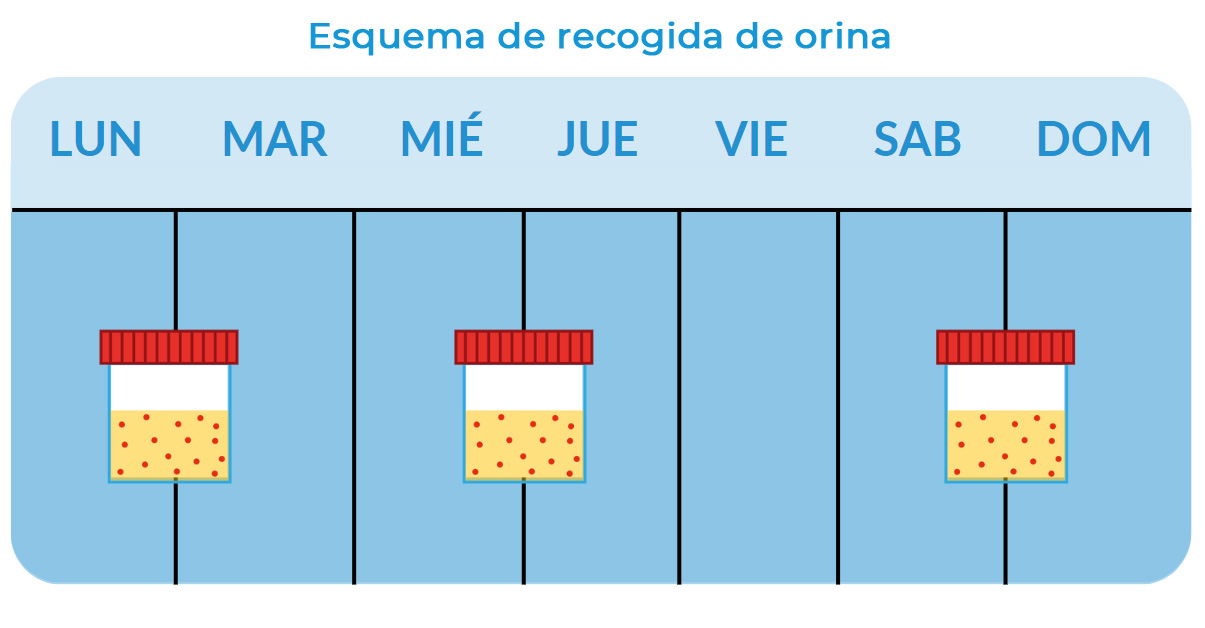How can unnoticed gluten intakes affect my small intestine?
The damage caused by small, continuous intakes of gluten is cumulative and in the long term prevents the recovery of the intestinal mucosa. This damage causes villi to lose their ability to absorb nutrients and increases the probability of future more serious diseases such as lymphomas, autoimmune diseases and bone weakness.
FAQs From Same Category
It is similar to a COVID/pregnancy test. If a single green line appears, it means that no gluten was detected in the sample, but if two lines appear –one green and one red- gluten has been detected, indicating a gluten intake within the preceding hours (urine) or days (stools). The result can be read between 15-30 minutes.
Gluten is excreted into urine quickly, whereas it persists in the intestine for days. Urine therefore is most appropriate for determining acute contamination over the previous 15 hours whereas stool is most appropriate for monitoring compliance over a longer period of time (previous 1-6 days).
It has been shown that the test can detect intakes from 50 mg gluten/day, which is the smallest amount of gluten that is harmful to celiac patients according to scientific consensus.
Check your eating habits to detect the origin of the gluten transgression.
No, it is not a diagnostic test.
This is one of the most common errors we come across. Recent clinical studies show that more than 70% of coeliac patients who do not have symptoms present atrophy (damage) of the intestinal mucosa. Although many patients’ base compliance with their diet on the absence of symptoms, they may still have been ingesting gluten without knowing it. These small intakes are only detectable through gluten fragments excreted in faeces and urine.
It is important to be clear that a minimum amount of gluten causes damage to the coeliac’s body, regardless of whether or not it results in symptoms. Intestinal damage always occurs. GlutenDetect checks for this silent consumption of gluten and helps you locate where it may be coming from.
GlutenDetect se debe de almacenar a temperatura ambiente.
According to recent clinical studies, when three urine samples are measured throughout the week and the result is negative, there is more than a 97% chance that the intestine is in good condition.Similarly, two negative stool tests over a week would indicate good compliance with the gluten-free diet.
Our recommendation would be to measure 3 urine samples, preferably one of them on the weekend, taking the first urine in the morning, or 2 stool samples over a week with 3-4 days between them.
The tests should be used on a regular basis (weekly, every two weeks, monthly…) to monitor compliance with the gluten-free diet over time.
The test is qualitative. A red line, regardless of its intensity, indicates the presence of gluten and a positive result.
According to different studies, gluten intake, whether voluntary or involuntary, is common among celiac patients. It is estimated that almost 90% of celiacs could intake gluten at least once a month.
Following a gluten-free diet day after day is difficult, but, in any case, it is important to assess the degree of exposure to gluten in daily habits or changing environmental circumstances (for example, after meals away from home).
No drug interference has been detected to date.
If you want to monitor whether you are following the gluten-free diet correctly on a daily basis:
It is best to collect two stool samples over a week, 2-3 days apart (for example, Monday-Thursday or Tuesday-Friday).
This monitoring is recommended every 3-6 months.
Illustrative calendar is attached:

If you want to see if you have had a specific involuntary exposure or in risky situations:
In case of suspicion of a specific violation, take into account the following information:
The optimal detection time after ingestion is 1 to 2 days, and the transgression can be detected up to 6 days after gluten ingestion.
